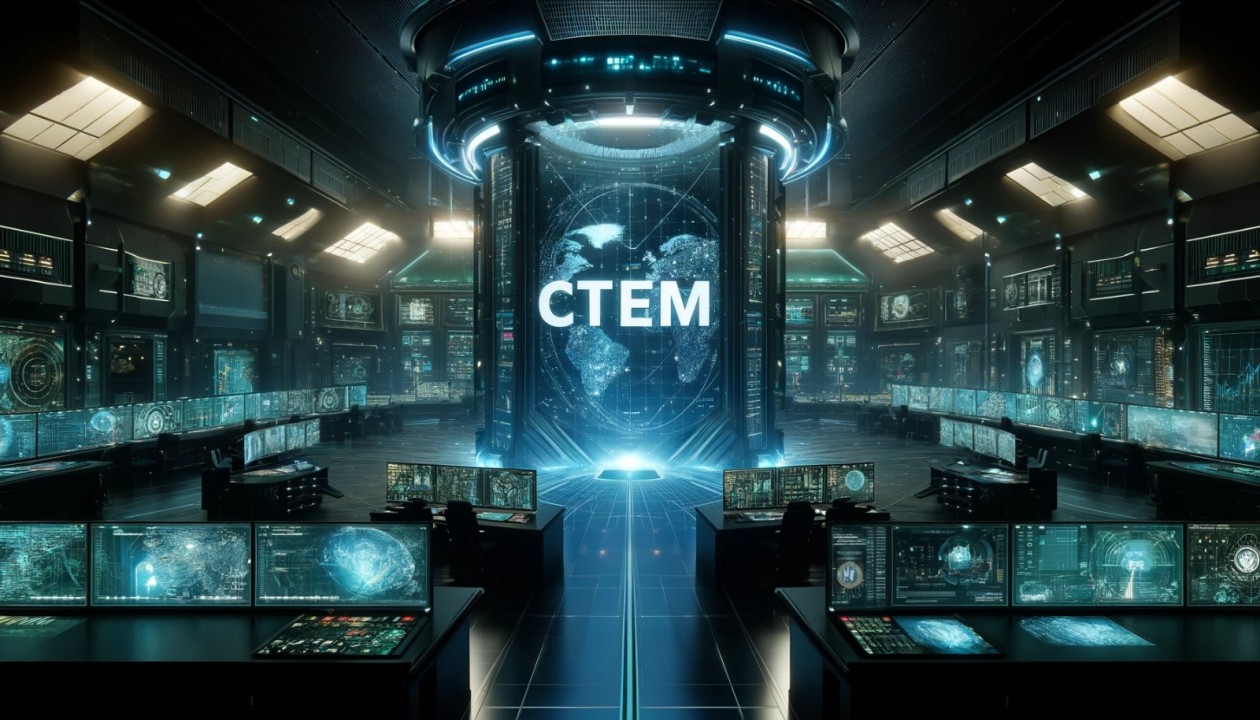
What is CTEM?
Continuous Threat Exposure Management (CTEM) is a strategic approach to cybersecurity that focuses on continuously monitoring and managing an organization's vulnerabilities to threats. It is a comprehensive solution that goes beyond typical vulnerability management systems and addresses the persistent and complex nature of cyber threats.
Why has it become so important?
Data breaches and security have been a persistent concern as we have entered the age of prime digitalization with GPT and other AI tools. Data theft can lead to the compromise of sensitive data and information and its misuse. It is a paradigm shift in how businesses approach cybersecurity, moving from reactive firefighting to proactive prevention.

Implementing CTEM can improve an organization's security posture, streamline procedures, and strengthen resilience, making it more responsive to evolving cyber threats. It enables you to understand your unique threat landscape and apply remedial actions to mitigate and eliminate the risks most relevant to your security posture, rather than attempting to locate and patch every vulnerability, even if it has a minor impact on your organization.
How can CTEM benefit you?
- Proactive Risk Management
CTEM identifies the threats and potential risks by continuously monitoring real-time insights. This allows for faster risk detection and response times and minimizes the impact of successful attacks.
- Prioritization of Threats
Prioritization of threats and risks helps streamline the risk's severity and allocate resources accordingly, effectively, and promptly. Automation benefits, such as automated tasks for vulnerability assessment, data collection, and reaction actions, increase efficiency, reduce manual labor, and reduce human mistakes.
- Uplevel your existing vulnerability management solution
CTEM is not only responsible for mitigating potential risks, but as it monitors thoroughly in real-time, it also contributes to upgrading and scaling the existing security management solutions.
- Authorize continuous assessments
It benefits authorization by delivering continuous assessments that help proactively avert risks using automated Identity and Access Management (IAM) capabilities. This minimizes the login and access of external systems and users, preventing data breaches.
- Alignment and Adaptability with Business Objectives
By rigorously monitoring and assessing risks, CTEM builds a mechanism to defend against cyber attacks, which is essential for enterprises to secure their important assets and assure operational continuity.
What are the five steps in the cycle of CTEM?
- Scoping
Determine your CTEM initiative's goals and grid your company's resources and weak points. This establishes the program’s scope, identifies the most crucial assets to safeguard, and determines the risk associated with those assets.
- Discovery
Know the areas where you are more prone to risks in your organization’s infrastructure, such as hardware, software, databases, and network infrastructure. Firms implement a wide range of IT discovery tools and methods to audit all of their IT resources and identify potential defects and risks, which may include vulnerability assessments, penetration testing, and other security audits.
- Prioritization
Prioritizing follows scoping and identifying existing risks in the organization's digital infrastructure. CTEM evaluates each risk and ranks them according to their severity.
- Validation
The team now test-runs its corrective approach for tackling the highest-priority vulnerabilities and threats. The Validation stage is crucial because it ensures that the organization's vulnerability to threats is adequately managed and reduced. It enables security teams to evaluate the effectiveness of remediation actions and make changes to improve the organization's security position.
- Mobilization
The final stage entails defining the goals and objectives, providing a holistic solution to mitigate the risks, and, most importantly, conducting a readiness assessment to determine the organization's current cyber and exposure management maturity level.

How can CTEM be effectively used in the Indian market?
- To deploy CTEM in the Indian market, an IT firm must first conduct market research to identify the difficulties and risks that Indian businesses face. This involves understanding the regulatory framework, cybersecurity landscape, and common attack vectors.
- The Indian audience is diversified and varied. Thus, implementing CTEM in the Indian Market is a turbulent job. By identifying the most crucial assets allows the IT organization to guarantee that resources are appropriately allocated and that the most valuable aspects of its business are protected.
- Next, they must implement CTEM techniques such as continuous monitoring, vulnerability scanning, and threat intelligence to minimize the risks of logging without authentication.
- By inculcating CTEM practices to employees, the IT business can ensure that everyone in the organization knows the importance of cybersecurity and their role in safeguarding the organization's resources.
Conclusion
Monitoring false positives and alerts, breaking down silos, promoting teamwork, managing change and opposition, dealing with data overload, and staying ahead of new dangers are all challenges when implementing CTEM. However, by understanding these obstacles and proactively seeking solutions, firms can maximize their CTEM program and realize the full benefits.






